Pierre, SD Pollen and Allergy Report for Summer 2023
Pollen Allergy Trends in Pierre, SD
When is pollen lowest in Pierre, SD?

February
Lowest month total PPM
Avg. PPM
When is pollen highest in Pierre, SD?

April
Highest month total PPM
Avg. PPM
How does pollen in Pierre, SD compare to South Dakota?
Pierre has a higher average PPM than the state of South Dakota.
Pierre yearly avg PPM:
South Dakota yearly avg PPM:
How does pollen in Pierre, SD compare to the USA?
Pierre has a higher average PPM than the USA.
Pierre yearly avg PPM:
USA yearly avg PPM:
Is pollen worse this year in Pierre, SD?
Spring 2023 was worse than spring 2022.
Spring 2023 PPM:
Spring 2022 PPM:
Average PPM in Pierre, SD
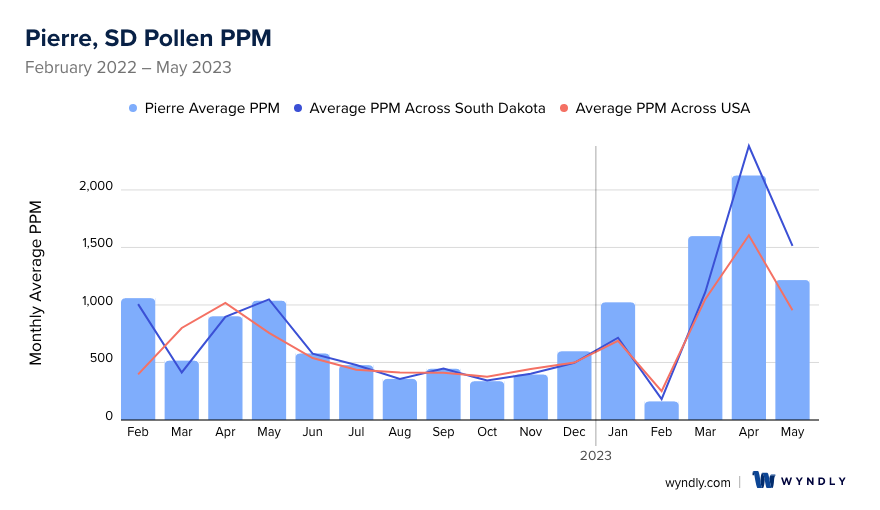
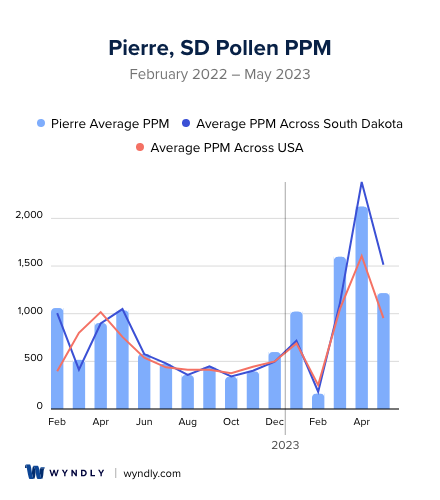
Pierre, SD Pollen and Allergy Breakdown by Month
Grass
When is grass pollen highest in Pierre, SD?
February has the highest grass pollen in Pierre, SD with an average PPM of
When is grass pollen lowest in Pierre, SD?
December has the lowest grass pollen in Pierre, SD with an average PPM of
Tree
When is tree pollen highest in Pierre, SD?
April has the highest tree pollen in Pierre, SD with an average PPM of
When is tree pollen lowest in Pierre, SD?
September has the lowest tree pollen in Pierre, SD with an average PPM of
Weed
When is weed pollen highest in Pierre, SD?
April has the highest weed pollen in Pierre, SD with an average PPM of
When is weed pollen lowest in Pierre, SD?
February has the lowest weed pollen in Pierre, SD with an average PPM of
Pierre, SD Pollen Monthly Breakdown by Pollen Type
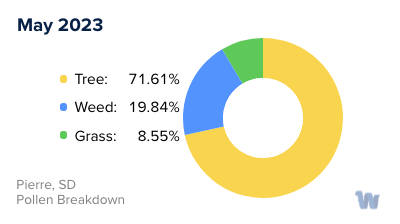
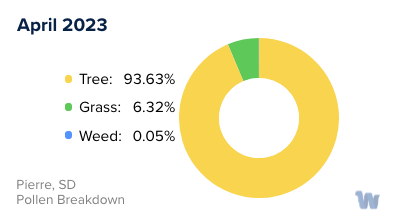
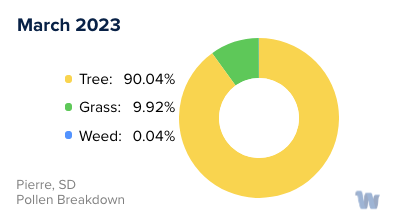
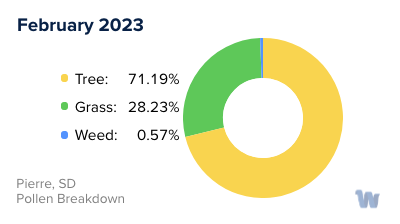
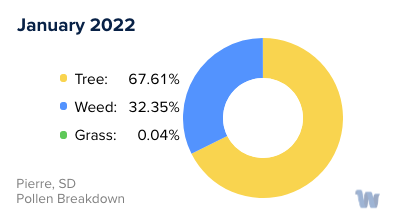
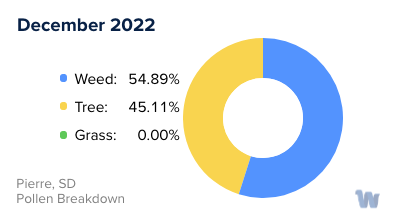
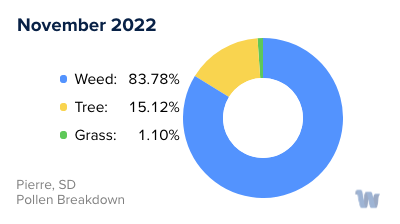
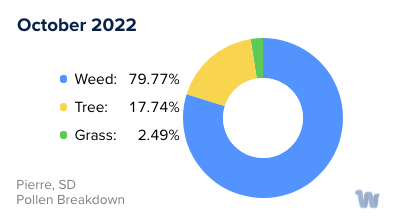
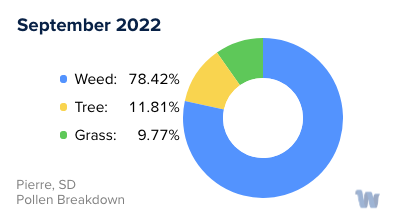
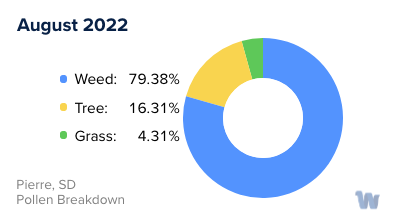
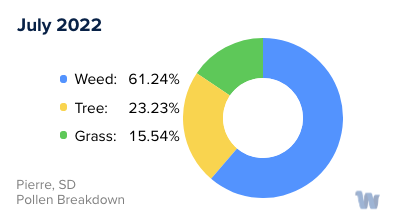
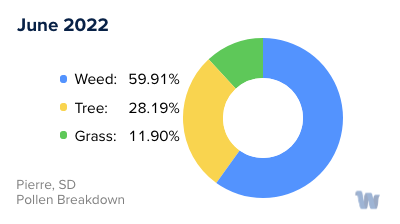
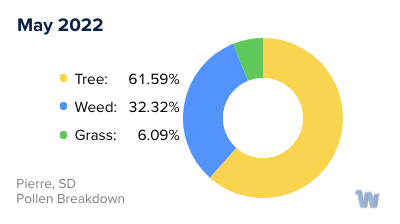
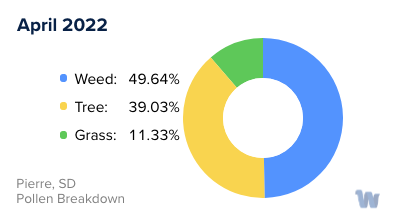
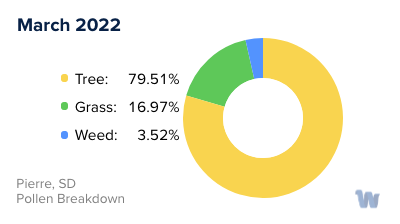
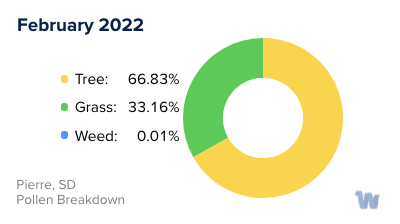
Pollen and Hay Fever in Pierre, SD
As the residents of Pierre, South Dakota, welcome the arrival of spring, they also brace themselves for the onset of allergy season. The region's diverse flora contributes to a range of pollens that can trigger allergies and hay fever. In the early months of spring, tree pollen becomes particularly prevalent. The main culprits are the box elder, oak, maple, willow, and ash trees that add to the verdant beauty of the area but can cause discomfort to allergy sufferers.
As the weather warms and ushers in the summer months, the grasses of South Dakota burst into life. The wide-open fields and prairies become a source of pollen, with corn and prairie grass being notable contributors. These grasses, while vital for the local ecosystem and agriculture, produce pollens that can stir up allergic reactions.
With the arrival of fall, the allergy focus shifts from grass to weeds. Common weeds such as wormwood, oldman, and sagebrush become the primary pollen producers. Their tiny pollen grains can be carried for miles by the wind, making it difficult for individuals with allergies to avoid exposure.
It's important to remember that the timing and severity of pollen seasons can vary from year to year, based on factors such as weather conditions and plant growth cycles. Even within the same city, different neighborhoods can have slightly different pollen profiles due to variations in local vegetation.
Knowledge about the types of pollen and their seasons can help individuals in Pierre, South Dakota understand what might be causing their allergies and hay fever. However, it's always recommended to consult with a healthcare provider for an accurate diagnosis and advice tailored to individual circumstances.


